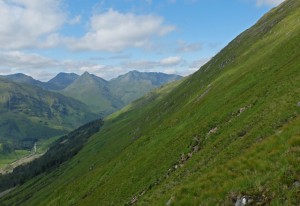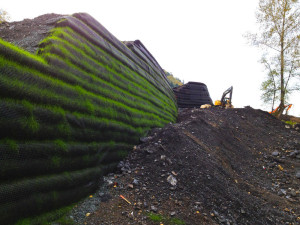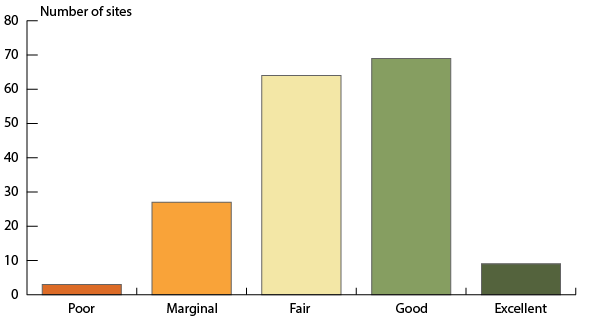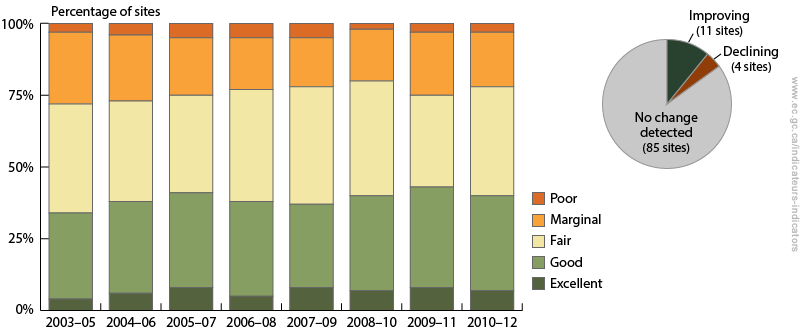2010 Olympics – Throwback Thursday
/0 Comments/in Construction Landscape Journal, Environment, Erosion Control, Grinding, Manufacturing, Municipal and Infrastructure Journal, Projects, Slope Stabilization, Sustainable Development /by Tanya RichardsPhotos: Terraseeded EcoBlanket – one month growth
/0 Comments/in Construction Landscape Journal, Erosion Control, Seeding, Slope Stabilization /by Tanya Richards9 Benefits to Using Compost for Erosion and Sediment Control
/0 Comments/in Environment, Erosion Control, Municipal and Infrastructure Journal, Sediment Control, Slope Stabilization, Stormwater Management, Sustainable Development /by Tanya RichardsBuildex Vancouver 2017
/0 Comments/in Construction Landscape Journal, Denbow Events, Green Infrastructure, Sediment Control, Slope Stabilization, Stormwater Management, Streambank Restoration, Sustainable Development /by Tanya RichardsVIDEO: EcoBlanket installation in Abbotsford
/0 Comments/in Erosion Control, Projects, Slope Stabilization /by Tanya Richards5 Steps for Erosion Control on Steep Slopes and Embankments
/28 Comments/in Erosion Control, Green Infrastructure, Slope Stabilization /by Tanya RichardsFor the most part, soil will stay put. However, on steep slopes and embankments, there is the elevated risk of erosion. It is essential to put as much effort as possible into actions that will stop the soil from washing away. This is because not only could this make the area that has been eroded barren, but it could also adversely affect water supply and introduce pollutants. Additionally, it could take decades to rebuild even the initial layer of topsoil, so it essential to have some insight on how to keep topsoil in place.
There are many methods that could be used to help prevent or stop erosion on steep slopes, some of which are listed below.
Plant Grass and Shrubs
 Grass and shrubs are very effective at stopping soil erosion. This is primarily because plant roots tend to hold soil together, making it harder to erode. The leaves of the plants also help to reduce the velocity of raindrops falling on the ground, making it harder for them to dislodge the soil and erode it. Ornamental grass and low, spreading shrubs work best as they leave no areas of bare soil exposed to the elements.
Grass and shrubs are very effective at stopping soil erosion. This is primarily because plant roots tend to hold soil together, making it harder to erode. The leaves of the plants also help to reduce the velocity of raindrops falling on the ground, making it harder for them to dislodge the soil and erode it. Ornamental grass and low, spreading shrubs work best as they leave no areas of bare soil exposed to the elements.
Use Erosion Control Blankets to Add Vegetation to Slopes
There are many varieties of fiber, biodegradable, and compost blankets/mats on the market today, and they have all been designed with one aim; to minimize the effects of water erosion on slopes and embankments. Rolled mats are usually made from mulch that is held together by a fiber mesh. They degrade slowly, allowing vegetation that may have been grown in the area to grow and take over the job of protecting the soil from erosion when the mats have finally degraded completely. Compost erosion control blankets act similarly to mulch products but provide organic nutrients that promote vegetation growth, even in areas where germination, moisture management and irrigation could be challenging.
Build Terraces
 If you are planning on trying to control the erosion on very steep slopes or embankments, sometimes planting vegetation may just not cut it as the slope may be too steep to support anything other than the hardiest grass due to the rapid rate of erosion. If this is the case, you should consider building terraces to help slow down erosion as the vegetation takes hold. Terraces can be made out of anything, from wood to concrete blocks to bio-mechanical solutions like the Cascadia Green Wall that uses Filter Soxx with natural mulch/seed filling and geogrid for structural stability. The beds that are created by the terraces can then be used to plant vegetation such as ornamental plants or grass.
If you are planning on trying to control the erosion on very steep slopes or embankments, sometimes planting vegetation may just not cut it as the slope may be too steep to support anything other than the hardiest grass due to the rapid rate of erosion. If this is the case, you should consider building terraces to help slow down erosion as the vegetation takes hold. Terraces can be made out of anything, from wood to concrete blocks to bio-mechanical solutions like the Cascadia Green Wall that uses Filter Soxx with natural mulch/seed filling and geogrid for structural stability. The beds that are created by the terraces can then be used to plant vegetation such as ornamental plants or grass.
Create Diversions to Help Drainage
Depending on the incline of the slope or embankment, one of the most effective ways to help prevent erosion is to create diversions which will channel excess water down the slope along a predetermined path. One of the simplest ways to do this is to create open ditches or drains by simply digging along the slope at regular intervals. Use of pipes and gutters is also very effective, and work just as well as natural drains when designed and installed properly.
EcoBlanket on slopes at Albion
/0 Comments/in Construction Landscape Journal, Environment, Erosion Control, Slope Stabilization, Sustainable Development /by Tanya RichardsSustainable Development & Freshwater Quality in Canadian Rivers
/0 Comments/in Construction Landscape Journal, Environment, Sediment Control, Slope Stabilization, Streambank Restoration, Sustainable Development /by Tanya RichardsIn our quest for sustainable development, a major consideration must be maintaining the water quality of our streams, rivers and other water sources. These water sources support plant and animal habitats, as well as human commercial, industrial and recreational activities.
The following article on freshwater quality trends in Canadian rivers was originally posted on the Environment Canada website but has been reproduced below for your convenience. As mentioned below, a key factor affecting the quality of water in Canadian rivers is the amount of rain and snowfall during the year, which can carry soil and pollution through runoff and leaching into the rivers. The way that construction development is performed greatly affects the sustainability of our rivers for the long term.
As the article concludes, one important factor in reversing water quality trends in our rivers is to build the health of stream banks by planting native vegetation and trees. Another important part of ensuring the long-term establishment of this vegetation is to rejuvenate and stabilize the soil with compost-based soils and growing mediums, as with Denbow’s Terraseeding service.
Freshwater Quality in Canadian Rivers
The Freshwater Quality in Canadian Rivers indicator is designed to provide an overall measure of the ability of select rivers across Canada to support aquatic life.[1] It integrates multiple pressures from human activity upstream of water quality monitoring sites to present freshwater quality in the regions where the majority of Canadians live.[2]The indicator focuses on rivers with higher risks to water quality and provides Canadians with an indication of human impacts on freshwater quality.
For the 2010 to 2012 period, freshwater quality in Canadian rivers where human activities are most concentrated was rated:
- excellent or good at 45% of monitoring sites,
- fair at 37% of sites,
- marginal at 16% of sites, and
- poor at 2% of sites.
Overall, freshwater quality in Canadian rivers can maintain healthy river ecosystems.
National freshwater quality indicator, Canada, 2010 to 2012 period

The bar graph presents freshwater quality rating in rivers selected to be representative of the regions of Canada where human activities are most concentrated for the period 2010 to 2012. The bars show the number of sites where freshwater quality was rated excellent (9), good (69), fair (64), marginal (27) and poor (3). Ratings are based on data from 172 monitoring sites.
Note: Freshwater quality was assessed at 172 sites on select rivers throughout 16 of Canada’s drainage regions where human activity is most intensive using the Canadian Council of Ministers of the Environment’s Water Quality Index.
Source: Data assembled by Environment Canada from federal, provincial, territorial and joint water quality monitoring programs.
Clean freshwater is an essential resource. It provides habitat for aquatic plants and animals, supports many commercial and industrial uses, and is at the heart of many recreational activities. Impaired water quality can undermine both aquatic ecosystem health and economic activities, such as fisheries, tourism and agriculture.
Freshwater quality varies naturally across Canada because of the country’s diverse geology and climate. It is further shaped by the ways in which people have developed the land around rivers and lakes. Each freshwater quality monitoring site has its own unique geography and set of human pressures.[3]
The rivers included in the indicators are selected to be representative of the drainage regions in Canada where human activities, such as industry, agriculture, urban growth and recreation, are most concentrated. The potential impacts of these human activities mean that these rivers are generally considered to have a higher potential for water quality impairment. At each site, physical properties of water, such as temperature, and levels of chemical substances, such as nutrients and metals, are measured and compared to freshwater quality guidelines. The more often a freshwater quality measurement is above its guidelines, the lower the freshwater quality rating will be.
Change in the national freshwater quality indicator through time
Between 2003–2005 and 2010–2012, there was an increase in the percentage of sites rated good or excellent and a decline in the percentage of sites rated poor or marginal.
Overall, the freshwater quality scores have:
- improved at 11 sites;
- declined at 4 sites; and
- showed no change at the remaining 85 sites.
National freshwater quality indicator, Canada, change between 2003–2005 and 2010–2012

The bar graph shows the percentage of sites where freshwater quality was rated excellent, good, fair, marginal and poor between 2003–2005 and 2010–2012. The inset pie chart shows the number of sites where the freshwater quality indicator has improved, where it has deteriorated, and where no change was detected. Between 2003–2005 and 2010–2012, the freshwater quality indicator rankings have improved at 11 sites and declined at four sites. No change was detected at 85 sites.
Note: Change in the indicator between the 2003–2005 and 2010–2012 periods was assessed at 100 sites in 16 drainage regions across Canada where historical data are available. For each site, change in the indicator was assessed using a consistent set of water quality guidelines and parameters through time.
Source: Data assembled by Environment Canada from federal, provincial, territorial and joint water quality monitoring programs.
Freshwater quality is affected by rain and snow which controls how much water runs off the land or leaches through soils. It is also affected by pollution released directly into it or that travels across land and through the air. Urban growth, agricultural practices and industrial development impact how water moves across the land and change water quality along the way. These multiple pressures on water quality mean freshwater quality trends are slow to change.
The decline in water quality can be reversed by upgrading wastewater treatment plants, adopting environmental farming practices, or planting native vegetation, such as trees, along rivers.
Save


